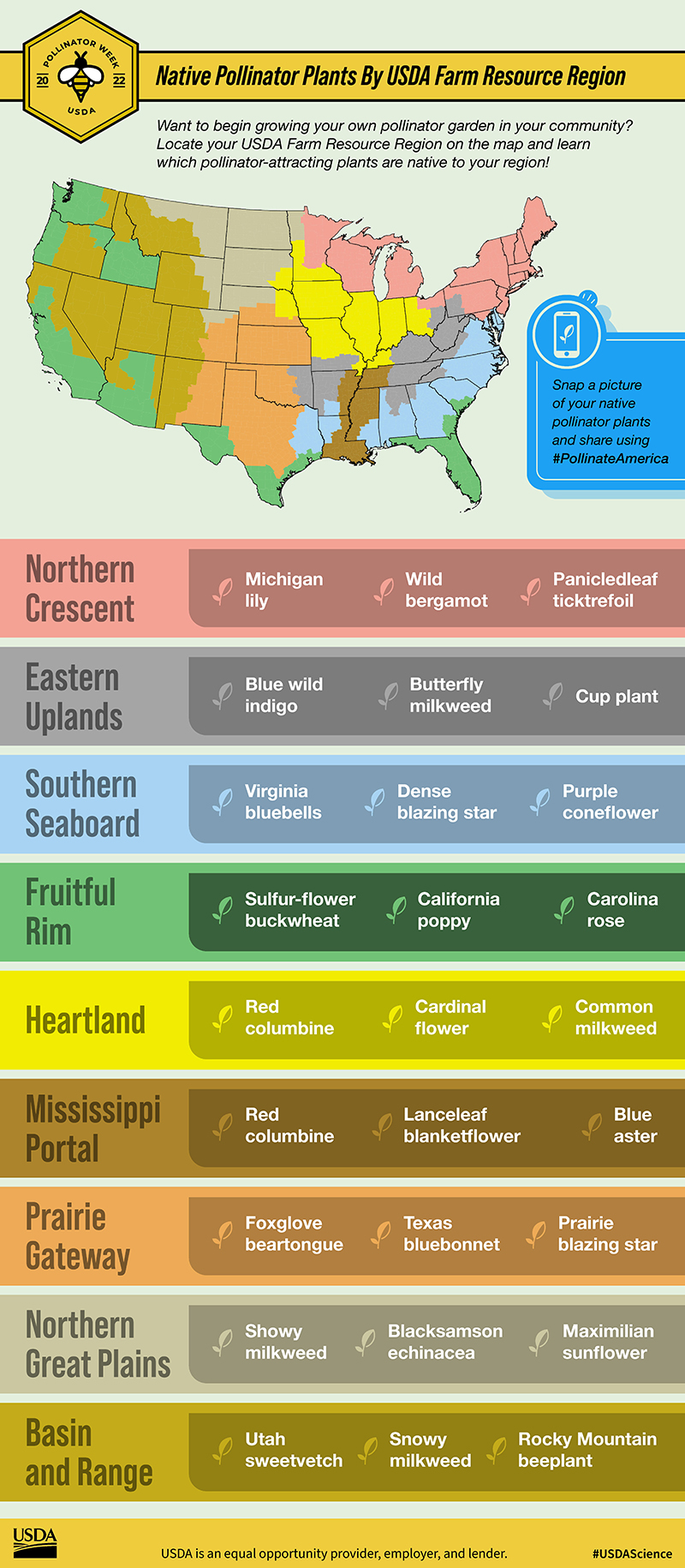The tiny but mighty army powering food production

To hear a bee buzzing, you have to quiet the cacophony of life — the whine of electronic devices, road noise and chatter. But once you tune into the bee’s steady hum and truly listen, you’ll soon realize that it’s been there all along.
Supporting the food supply is a quietly swarming army of bees, birds, bats and butterflies pollinating plants that will mature into the fruits, nuts, vegetables and even grains enjoyed daily. You might not notice them at first, but these tiny insects are powerful pollinating powerhouses underpinning productive yields across the U.S.
While honeybees are America’s primary commercial pollinator — with more than 100 domestic crops relying on their services — the USDA estimates that pollinators add more than $18 billion in revenue to U.S. crop production every year. These often overlooked players in the food system are critical to thriving and resilient food production.
During the week of June 19-25, 2023, the USDA along with advocacy groups are giving these tiny, but mighty pollinators center stage, showcasing the importance of these insects and small mammals during National Pollinator Week.
“Our world's ecosystem and food supply greatly rely on pollinators — without them, many of our nation's crops wouldn't be able to produce as many fruits, nuts or vegetables resulting in lower supplies and higher prices,” Agriculture Secretary Tom Vilsack said in a news release. “This week and every week, it is critically important that we continue to encourage the protection of pollinators and their habitats. Fewer pollinators harm both farm income and nutrition security for many Americans. Healthy pollinator populations are essential to the continued success and well-being of agricultural producers, rural America and the entire U.S. economy.”
What is pollination, anyway?
Pollination is the crucial first step in the process that produces seeds, fruit and future plants. This step takes place when the pollen of a flower moves from the male to the female parts of the plant. While self-pollination and wind and water pollination are ways to move pollen, pollinators play a critical role in aiding in plant reproduction.
Pollinating animals travel from plant to plant, carrying pollen on their bodies allowing it to transfer to flowering plants. Almonds, berries, melons, squashes and noncitrus fruits in particular rely on pollination for productive yields.

What are pollinators?
When you think of pollinators, think of the flower-loving insects and small mammals seen loitering in flower beds and spring garden. Birds, bats, butterflies, moths, flies, beetles, wasps, small mammals and — most importantly — bees are all pollinators. They are experts at moving from flower to flower, drinking nectar or ingesting pollen, while transporting pollen grains as they move from spot to spot.
Supporting pollinator health with research and data
Pollinator health is a multi-faceted issue. Many pollinator populations are on the decline largely due to loss in habitat, compounded by pollution, chemicals, disease and shifts in climate contributing to shrinking pollinator populations.
Recent advances in combatting American Foulbrood disease in honeybees, an infection caused by paenibacilus larvae, have marked a step in the right direction. In January 2023, a honeybee vaccine received conditional license for use by the USDA, giving commercial beekeepers in the U.S. an effective tool to combat honeybee declines from infection.
To encourage thriving pollinator populations and support pollinator health, the USDA is leveraging its research, data collection, diagnostic services, monitoring, pollinator habitat enhancement programs and investments. Not only does the agency publish educational resources, but it is also planning to release the “2023 Annual Strategic Pollinator Priorities Report” outlining USDA pollinator research and programmatic priorities, according to a news release.
In the private sector, Fresno, Calif.-based pollination service BeeHero is working to support pollinator health through data mapping. The company is capturing data via more than 10 million hive samples daily from across the globe with its active in-hive sensors, according to a news release. This data will power BeeHero analytics and help researchers learn new ways to improve bee colony health, along with gathering global pollinator and sustainable agriculture practice insights.
Ultimately, the availability of BeeHero’s honeybee data will help beekeepers and growers to make informed decisions that not only promote healthier hives, but also enable precision pollination and optimal hive management practices, the company said. Armed with this information, growers will be able to make more informed decisions about crop pollination to reduce costs and increase yields, according to the release.
“BeeHero is the first company to continuously log data from hives 24/7, providing more transparency into the hives than ever before possible, and producing more insights for beekeepers and growers around the world,” Omer Davidi, BeeHero’s CEO and co-founder, said in the release. “Our success in reaching this milestone is a testament to our team's ingenuity and hard work, and we are excited to continue innovating to ensure the vital health of bees and the future of precision pollination and sustainable agriculture.”
Other ways to support pollinators
While integrating native plants, flowering hedgerows or pollinator-friendly habitats are powerful steps farmers can take to supporting pollinators in agricultural production settings, you don’t need hundreds of acres to support bees, birds and butterflies. Everyone with a plot of ground can make room for pollinator habitat — whether it’s a backyard garden or an orchard hedgerow.
Planting native pollinator-friendly plants is one step everyone can do, according to the USDA.








